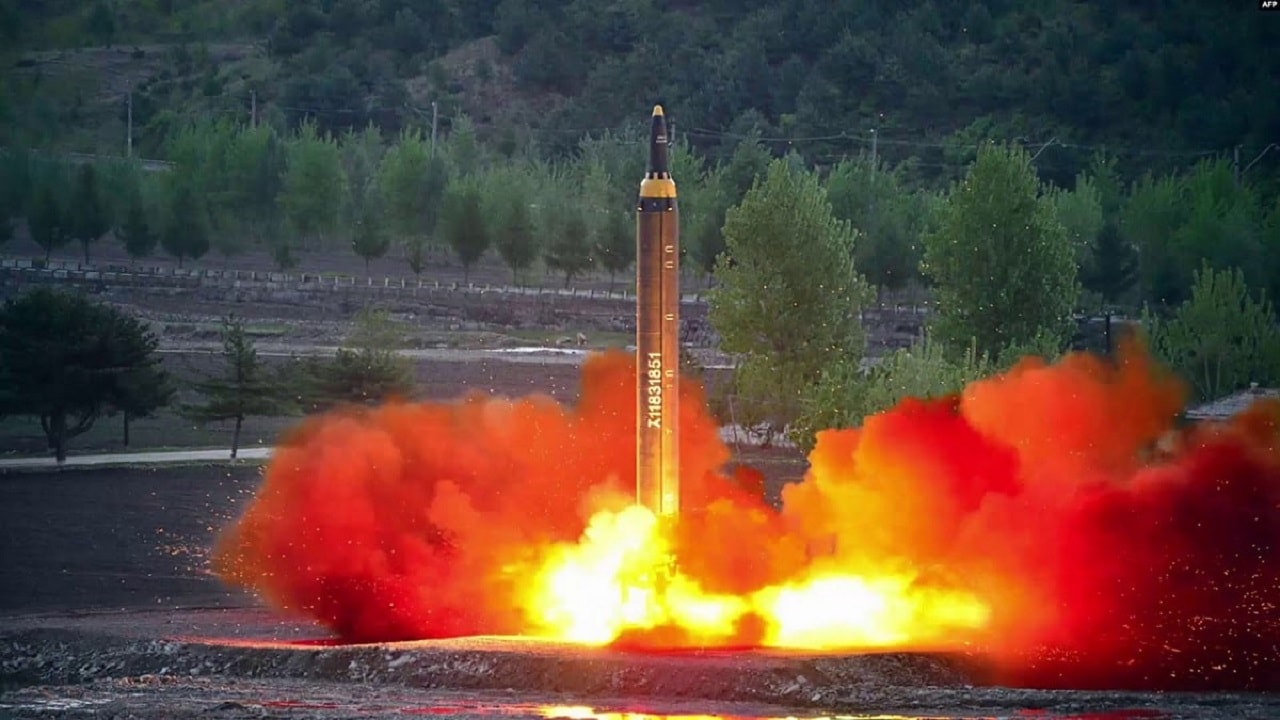North Korea recently conducted another test launch of their now well-documented system which they call the Hwasong-12. The missile was launched to the east and covered a route that took it over Japan. The missile also reportedly successfully flew approximately 4,500 kilometers before falling harmlessly into the Pacific Ocean – showing a successful launch of this system that the North Koreans reportedly now have operational and that was first test-launched (successfully) on May 13, 2017.
Why the Hwasong-12 IRBM Matters
There are several important things about the launch to take note of. First of all, the Hwasong-12 uses the RD-250 (or variant) engine. The RD-250 engine is manufactured in Ukraine. It appears that the RD-250 engine was either stolen, sold by corrupt officials, or acquired from Ukraine in a deal several years ago. The Ukrainian government denies that there was any acquisition deal between their government and Pyongyang. Secondly, the RD-250 engine is also the basis for the first stage of both the Hwasong-14 and Hwasong-15 ICBM systems – making it a vital component of both North Korea’s IRBM and ICBM programs. Analysis of Pyongyang’s activities with the Hwasong-14 suggests that this system is now being manufactured (in whole) in North Korea. The missile appears to be reliable since most tests have been successful.
It is also important to note that unlike most of North Korea’s long-range ballistic missile tests in recent years, Pyongyang tested this missile to what was close to its maximum effective range. In the recent past, most long-range ballistic missile tests were conducted by launching this missile on what looked like almost a straight shot into the air. This allowed for analysis assessing what the range of the missile would be if it was launched on an angle such as it would use in wartime but still left questions. There were no questions this time. Most analysts worldwide have assessed since 2017 that the Hwasong-12 system has a range of approximately 4,500 kilometers and that is exactly (or close to it) how far the missile flew.
The North Koreans launched the missile on a route that took it directly over Japan. Pyongyang did this knowing that this would cause an uproar. Nevertheless, the decision was made to launch it on this route, showing diplomatic and military repercussions at this time are almost meaningless to the North Koreans, who are likely instead pushing the ROK-US alliance, and the Japanese into what they hope will be concessions – the most important of which would be the easing of sanctions, something that did not happen during the Trump administration and has not happened thus far in the Biden administration.
Of note, the Hwasong-12 uses an engine that has 80 tons of thrust at sea level. The United States sanctioned Iran in 2016 for its work with the North Koreans to acquire a rocket engine with 80 tons of thrust. Given the evidence that has come to light since 2017, it thus now appears that North Korea in fact sold the Hwasong-12 (or a variant of it) to the Iranians, and in fact, the deal was going on since at least 2013. Since this missile has proven effective and dependable for the most part, it is now a reasonable assessment to assume Iran is also close to having an operational missile that looks very much like the Hwasong-12 (because it is). With a range of 4,500 kilometers, Iran could hit NATO headquarters in Europe. The Hwasong-14 is a nuclear-capable missile, meaning once Iran brings its systems online it would exacerbate any threat they could pose if their nuclear military weaponization program becomes operational. We must never forget, if you see it in North Korea today, you will see it in Iran tomorrow.
The missile test conducted this week may seem simple, yet it is tied to upgrading and maintaining North Korea’s long-range missile capabilities, and continues to show North Korea’s best proliferation customer (Iran) that the missile is dependable. Indeed, in addition to these important things, North Korea was able to create a reaction in Japan and in the ROK-US alliance, and perhaps even give itself a great preamble for what looks like an imminent nuclear test in the near future. The provocative behavior continues.
Bruce E. Bechtol, Jr. (Ph.D. Union Institute), is an award-winning professor of political science at Angelo State University and a retired Marine. He was formerly on the faculty at the Marine Corps Command and Staff College (2005–2010) and the Air Command and Staff College (2003–2005).

